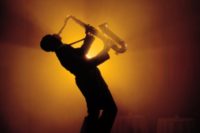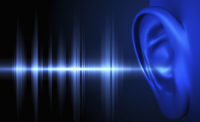At least four million workers go to work each day in damaging noise environments, ten million people in the U.S. have a noise-related hearing loss, and 22 million workers are exposed to potentially damaging noise each year, according to the Centers for Disease Control and Prevention (CDC).
Occupational hearing loss is the most commonly recorded occupational illness in manufacturing accounting, for 1 in 9 recordable illnesses, states the Bureau of Labor Statistics, as cited in a 2010 CDC National Institute for Occupational Safety and Health (NIOSH) document.
Although a traumatic noise exposure may cause an immediate hearing loss in some cases, most occupational hearing losses occur so gradually that workers are unaware they are losing their hearing, states the document. With continued exposure, hearing loss spreads into those frequencies most needed to understand speech.
“Most people wear disposable foam earplugs incorrectly, which limits their effectiveness,” says John Franks, PhD, a former NIOSH Hearing Loss Prevention Section Chief. “Each foam earplug is supposed to be rolled tightly, put deep in your ear canal, then held in place with your index finger until it fully expands and you can just see the outer edge. Instead, most people leave them hanging out of their ears.”
Another challenge occurs when workers must talk in person or via two-way radio in high-noise work environments. To hear and communicate, they remove their hearing protection, which exposes them to damaging noise for the duration of the conversation. Such cumulative exposure to harmful workplace noise is a leading cause of hearing loss.
Essentially what is required to optimally protect workers is a hearing loss prevention trifecta: fit, comfort, and the ability to communicate verbally or over radios without having to remove the protection.
Fit: Like snowflakes, no two ears are the same – and they continue to grow throughout a person’s lifetime. Better fit -- and comfort -- means workers wear hearing protection more compliantly.
Protection: Second, the hearing loss prevention device would prevent high-noise sounds from entering the ear at levels that could cause instant damage or damage over time.
“NIOSH recommends reducing worker noise exposure to 85 dB for eight hours, but this can still leave 12-15 percent with hearing loss over their work lives,” says Franks.
Communication: High-noise exposure should be blocked without limiting communication, and with protection worn all day. This can help eliminate hearing damage that occurs when hearing protectors are removed in high-decibel work settings to communicate.
One solution: Some cost-effective hearing protectors are fitted to the individual worker so every worker receives the same high level of hearing protection.
“If you make custom hearing protection available for everyone and ensure people know how to use it, studies have shown it can reduce occupational hearing loss to near zero in industry,” says Franks.
“A custom hearing protector fit is a key part of preventing occupational hearing loss because everyone’s outer ear and ear canal is unique,” says Franks. “The closer the fit, the better the function and the less people take them out to relieve ear pressure or modify them as is common with disposable foam earplugs.”
How can hearing protection be customized and personalized?
In the case of one vendor, the vendor’s representatives go to the plant to take impressions of each worker’s ear canal and outer ear in a process that usually takes about ten minutes per worker.
The custom impression is sent to the lab for processing where the device, which is an exact replica of the wearer’s ear canal and outer ear, is manufactured. This ensures the device seals the ear both in the canal and around the ear, preventing damaging noise from entering while eliminating ear pressure. Such precision is being increased by scanning the ear impression and moving into 3D printing of the casting for an even closer fit. The representatives then return to the plant to train workers on how to ensure proper fit and fix any that do not fit perfectly.
“While various silicone-based hearing protectors exist, it is important to use one made of medical grade silicone,” says Franks. “This can help ensure that it is sufficiently supple and can prevent someone from developing an allergy to it.”
Communication without removing the device
Since workers often need to communicate in person during their work shift, they typically remove hearing protection to talk. Including a filter and vent in custom ear protectors can make speech more understandable by reducing attenuation at higher speech frequencies. This allows leaving the protectors in place while talking.
“If you’re using a radio to communicate, it is better to run a tube from the radio receiver to the custom hearing protector so workers can lower radio volume and protect their hearing,” says Franks.
For more info, call Protect Ear USA toll-free at 1-800-520-0220 ext. 323; Email: hearus@protectear.com; or visit www.protectear.com/us. In Canada, call Custom Protect Ear toll-free at 1-800-520-0220 ext 321; Fax: 604-599-7377; Email: hear@protectear.com; or visit www.protectear.com.


